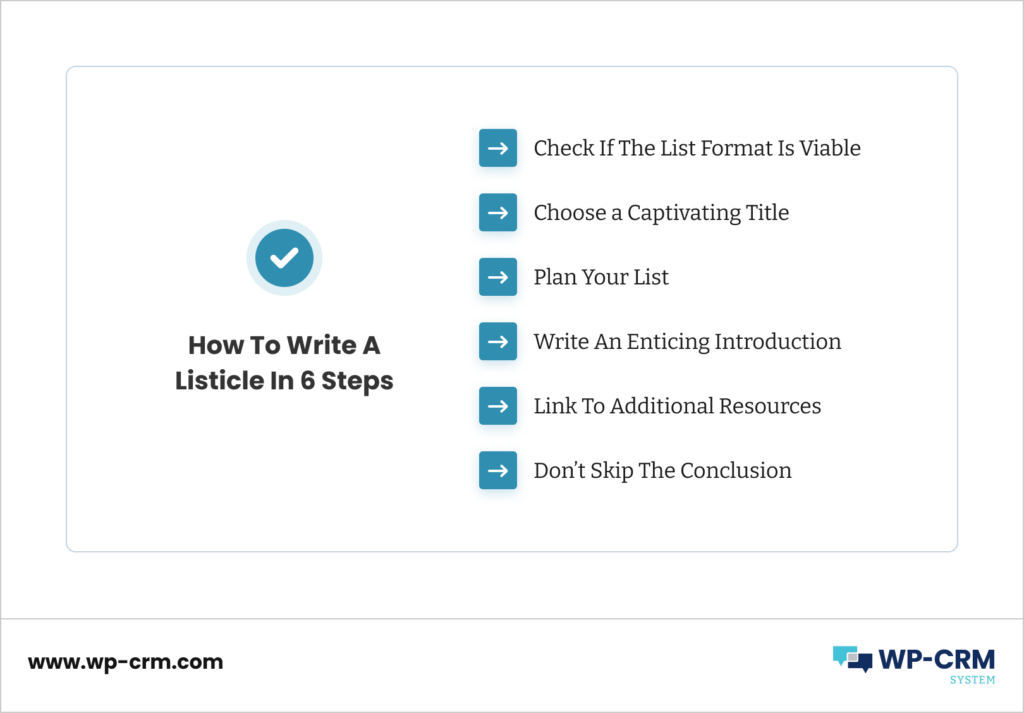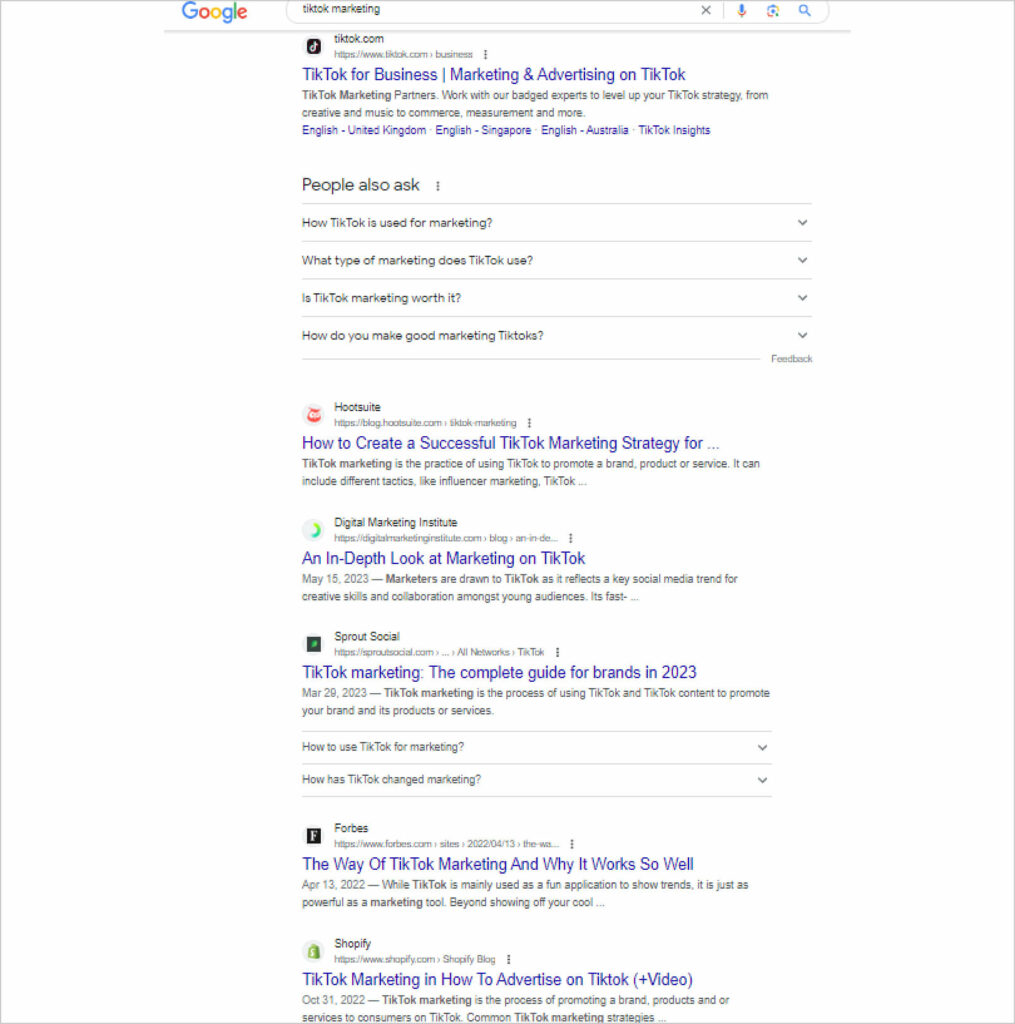How To Write A Listicle [6 Tips]
Publishing content consistently is essential for a blog to do well online. After all, this is how a brand establishes itself as a trustworthy, authoritative player in the industry. Apart from diligently sticking to an editorial calendar, you also need to make sure you diversify the content types you post, and follow best practices. And learning how to write a listicle is a great way to do both.
A listicle can be a blog post, an infographic, a social post and a video at the same time Also, usually the sections you include can be expanded on further in a separate article, giving you more ideas for your content backlog. This serves as a good opportunity to create pillar pages and a better ‘web’ of internal links to boost crawlability.
So, are you all pumped to gain on all these benefits a listicle could bring to your business? Hold on – there are a few things to keep in mind.
In fact, this article is primarily a list post itself! Here, we will first explain what a listicle is, and then dive into some best practices to write a high-quality article that will do well on SERPs. Let’s go!
What Is A Listicle?
Listicles are a popular form of online content that presents information in a concise and easily digestible list format. They typically feature a headline followed by a series of short sections, each focusing on a specific aspect of the subject. Listicles are designed to capture readers’ attention and provide them with quick, skimmable information on a particular topic.
Listicles are highly popular because of their readability. To prove that, let’s look at some stats – articles that contain lists every 500 words get 68% more traffic than those that don’t use lists at all. For that reason, 54% of bloggers use listicles in their content arsenal.
The numbered or bullet-pointed format allows readers to quickly scan the content and skip to the points they want to delve into further. This format also lends itself well to creating engaging and shareable content, as people can easily share specific snippets or the entire list on social media platforms.
Listicles are commonly found on news websites, blogs, and social media platforms, covering a wide range of topics from entertainment and lifestyle to health and technology. While some critics argue that listicles oversimplify complex subjects, they have become an effective way for content creators to capture and retain readers’ attention in today’s fast-paced digital landscape. Whether it’s “7 Steps To Build Your First WordPress Website” or “10 Must-Visit Destinations in Europe,” listicles have become a staple of online content consumption.
Are Listicles Good For SEO?
Some digital marketers may argue that listicles are just clickbait, and they won’t be wrong – plenty of them just tout insights but the copy in between the list items is mediocre and vague. Also, if your readers just read the headline and bounce, you actually lose on traffic.
In fact, 80% of readers never go past the title – so, make sure you do not only rely on effective, ‘clickbait-y’ lines but include valuable research and actionable tips that will help people do something in practice. Relying on them to search for additional info means sabotaging yourself – as this means letting readers leave your website halfway through your article and browse through a competitor’s site instead.
Therefore, knowing how to write a listicle can be good for SEO, but only if they provide good, detailed explanations. Otherwise, it is just lazy writing that rests on the hope that a buzzword would instantly bring traffic.
How To Write A Listicle In 6 Steps
Now that we are all clear on what a listicle is and what the SEO benefits are (and are not), let’s explore a few listicle ideas to help you create content that will engage your readers.

1. Make Sure The List Format Is Good For The Topic You Write About
Although you have prepared to write a listicle and the title seems perfectly fine, with a good-volume, fairly low-difficult-to-rank-for keyword, carry out competitor research first.
If you see that the keyword of your choice, when typed as a search query, gets results that are rather guides than listicles, maybe it is a good idea to turn your title around to match the trend.
For example, if I want to write an article on top TikTok marketing strategies and type in the primary keyword I will set for this post, I can easily see that the list format is not amongst the top results:

So, instead of “Top XX TikTok Marketing Strategies”, I will formulate my title into something along the lines of “How To Succeed In TikTok Marketing”.
2. Choose a Captivating Title
The title of your listicle plays a crucial role in attracting readers’ attention. It should be catchy, concise, and give a clear indication of what the article is about. Numbers are often used to create a sense of structure and intrigue. For example, “5 Proven Ways to Boost Your Productivity” or “10 Must-Try Recipes for a Healthy Breakfast.”
Additionally, consider incorporating intriguing adjectives or words that evoke curiosity. Words like “essential,” “surprising,” or “life-changing” can entice readers to click and explore the article further. The goal is to make your title stand out among the sea of content and compel readers to dive into your listicle.
However, stay away from wording that sounds like clickbait (unless that’s purely your intention). Buzzwords like “scandal”, “hot news” and “beware” belong in the tabloids, so do your research to avoid being too original with your headlines.
Also, according to number psychology, people prefer odd numbers to even ones, so if you simply want to boost your CTR, then this is all you need to know. However, don’t try to add on extra sections just for the sake of reaching a certain count – unnecessary fluff in articles does not serve any SEO purpose and fails to meet Google’s Helpful Content Update.
3. Plan Your List

Effective planning is a key part of knowing how to write a listicle that is well-structured. Start by identifying the key points or subtopics you want to cover. Let’s say you’re writing a listicle on travel destinations in Europe. Your list could include points such as “Paris – The City of Lights,” “Santorini – A Picturesque Greek Island,” and “Amsterdam – A Blend of Culture and Canals.”
Once you have determined your main points, consider the order in which they will appear. You may choose to arrange them geographically, by popularity, or in any other logical sequence that suits your topic. Planning your list in advance ensures a logical flow and helps you avoid redundancy or overlooking important aspects of your subject.
4. Write An Enticing Introduction
The introduction of your listicle is where you grab readers’ attention and entice them to keep reading. Start with a compelling opening statement or pose a thought-provoking question that relates to your topic. For instance, if you’re writing a listicle on effective study techniques, you might begin with, “Do you struggle to retain information while studying? Discover these proven techniques that can supercharge your learning.”
By addressing a pain point or highlighting a common challenge, you immediately resonate with your audience and create a desire to find solutions. Remember, the introduction should provide a sneak peek of what readers can expect from the listicle and why it’s worth their time.
Furthermore, you can include a brief overview of the benefits or outcomes readers can expect to achieve by following your advice. This gives them a clear reason to continue reading and explore the insights and tips you’ll be sharing in the subsequent points.
5. Link To Additional Resources
Incorporating links to additional resources within your listicle is a valuable way to enhance the reader’s experience and provide them with further in-depth information. By including relevant and reputable sources, you can bolster the credibility of your listicle and offer readers the opportunity to explore the topic beyond the scope of your content.
When selecting resources to link, ensure that they align with the points you have covered and provide valuable insights or supplementary content. For instance, if you’re writing a listicle on effective time management techniques, you could include links to productivity apps, time management courses, or articles by renowned experts in the field.
It may seem counterintuitive to encourage readers to click away from your site but that’s not the cas if you place the links properly. By including these external resources, you not only provide readers with additional avenues for learning but also demonstrate your commitment to offering comprehensive and reliable information. It shows that you have conducted thorough research and are dedicated to equipping readers with valuable knowledge.
In addition to external resources, consider including internal links to related articles or content on your own website or blog. This not only keeps readers engaged within your platform but also encourages them to explore more of your valuable content. For example, if you have previously written a detailed guide on a specific aspect mentioned in your listicle, you can link to it to provide readers with a deeper dive into the subject matter.
Remember to format your links appropriately using descriptive anchor text. Instead of using generic phrases like “click here” or “read more,” opt for specific and informative anchor text that accurately describes the linked resource. This helps readers understand the context and relevance of the link before clicking on it.
6. Don’t Skip The Conclusion
The conclusion of your listicle is just as important as the introduction and the points you’ve covered. It provides a sense of closure and leaves a lasting impression on your readers. Therefore, it’s crucial not to overlook this section and to give it the attention it deserves.
In the conclusion, summarize the key takeaways or main points from your listicle. Reinforce the most valuable insights and highlight the benefits that readers can gain by implementing the steps you’ve suggested. This reinforces the value of your content and leaves a lasting impact on your audience.
Additionally, consider adding a call-to-action. Encourage readers to take the next step, whether it’s applying the tips you’ve provided, sharing the listicle with others, or engaging in a discussion in the comments section. A well-crafted CTA helps to foster engagement and creates a sense of community around your content.
Lastly, leave your readers with a thought-provoking or inspiring closing statement. It could be a reflective question, a motivational quote, or a memorable anecdote that ties back to the theme of your listicle.
Winding Up
And there you have it! We’ve outlined the necessary steps on how to write a listicle, and now you know what to avoid in order to get actual SEO value with this format. Remember, the key is to make it worth the readers’ time by providing well-informed, in-depth content.
